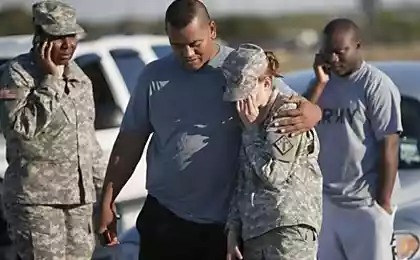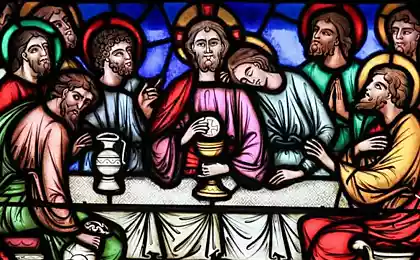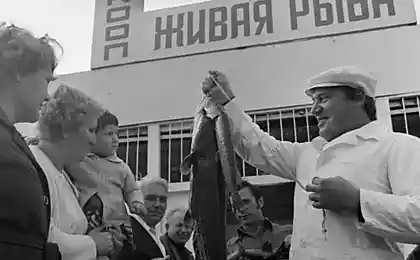935
Black Thursday
April 12, 1951 in the history of American aviation was called Black Thursday. Such a large number of strategic bombers in a dogfight with the Americans did not lose as long as World War II ended.
Fighting between North and South Korea began June 25, 1950. This war lasted exactly three years and one month. The United States acted in Korea open, under the UN flag on the side of South Korea and the Soviet Union - behind the scenes on the side of North Korea.
US forces in the conflict were presented by all branches of the military, which included several hundred thousand troops. The Soviet armed forces - just one individual Fighter Air, where, however, except aircraft parts included several anti-aircraft artillery divisions, several anti-aircraft searchlight regiments and battalions of several radio lokatorschikov.
The combat operations were actively involved as only anti-aircraft gunners and pilots, who as part of the 64th Fighter Air resisted 5 powerful air force and air their allies - Australia, Canada, England, South Korea, South Africa. Fighting Soviet pilots of the 64th Fighter Air began on 1 November 1950, in jet fighters MiG-15 design Mikoyan and Gurevich.
I took here
MiG-15 with the identification marks of the DPRK
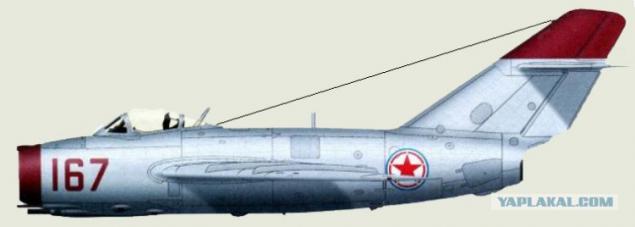
Since then, the undivided domination in the air Americans and their allies came to an end. This involved the best air war planes on both sides, for the first time worked out new tactics in the conduct of the air war jet technology. Already the first fight in the sky proved that American jets F-80s "Shuting Star" and the F-84 "Thunderjet" significantly inferior to the MiG-15 in speed, rate of climb and armament. The fighting ended in their flight. To remedy the situation, at the beginning of 1951, the US Air Force immediately sent to the Korean Peninsula newest fighters - F-86 Sabre. Yielding Miguén in the climb, and specific impulse, they surpassed it in maneuverability, greater flight range and set speed in a dive. But the MiG-15 has the advantage in arms: three guns (two 23 mm and one 37 mm) Effective range 800 m to 6 machine guns caliber 12, 7 mm with a range of 400 meters. However, the MiGs had to deal in the air, not only with the Americans, but also with the military of other countries serving under the UN flag. So, its military strength granted and Australia. However, the fighting qualities of Australian pilots and equipping their aircraft was such that after the first meeting with Soviet aces of sixteen machines, only four survived.
F-86 Sabre [i]
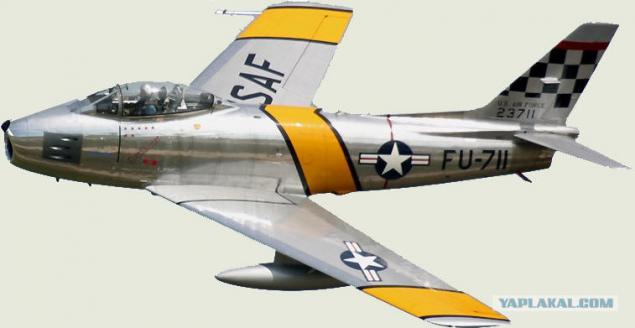
Soviet shield over Korean Air forced Americans to reduce the activity of fighting small groups of fighter-bombers. Stopped daily flights scouts and bombers. A period of major air battles of groups of F-86 with MiGs. One of the most popular American air raids took place on April 12 in the so-called Black Thursday 1951, when the Americans tried to bomb the railroad bridge across the Yalu River near Sinuiju settlement. It was the only railway line, on which supply the North Korean army. In the battle involved more than forty B-29 bomber. This is a huge machine, capable of carrying more than 9 tons of bomb load. Its defensive armament consisted of half a dozen heavy machine guns. Such aircraft dropped atomic bombs on Hiroshima and Nagasaki. B-29s operated under the cover of hundreds of F-80 and F-84, divided into small groups. In addition, the group participated in the raid snare of F-86, had a total of about fifty planes.
In a reflection of this flight from the airfield Antung was raised 36 MiG-15s from the 324th Air Division Svir, commanded by Ivan Kozhedub. The battle took place at a height of 7-8 thousand. M for 20 minutes. MiG-15 pairs and fours attacked a group of B-29s, not paying attention to the support group. It was finally shot down 14 American planes - 10 B-29s and four Sabre.
While Americans were three times outnumbered, the battle turned around April 12 for their complete defeat in the sky over Yalutszyanom opened dozens parachute domes, the crews of American bombers were trying to save their lives ahead of them waiting prisoner. Two Soviet aircraft were damaged, but soon resolve the problem, they were returned to duty. Total in this battle over the river were able to break only three American aircraft. They dropped three six-ton radio-controlled bomb explosion which injured by one of the pillars of the bridge, but after a few days, a strategically important bridge was restored. The US Air Force for the whole week has been declared mourning for the dead pilots. In Korea began 46 aces Soviet pilots. In total, this fifty pilots shot down 416 enemy aircraft. The best Soviet ace of the Korean War is considered to be the commander of 196 IAP 324th Air Division, Lieutenant Colonel Yevgeny Pepelyaev, beautiful commander, an excellent fighter pilot and a true friend of his senior subordinates. It is known that when one of the battles was shot down and killed his slave, Senior Lieutenant Valery Larionov, Pepeliaev not hesitate to rewrite it by three of its victories. Thus, the official number of young pilot shot down enemy aircraft reached five, and Larionov was posthumously awarded the title Hero of the Soviet Union, which guaranteed his widow, the rest with a baby in her arms, extensive benefits. Along with these three, the number of enemy aircraft destroyed Pepelyaev in the sky over the Korean peninsula is 23 units (1, F-80s, two F-84, two F-94, F-18, 86). Best American ace, Captain Joseph McConnell, Jr., Christopher, given the inflated victories, boasts only 16 planes shot down. In second place among our aces - Captain Nikolai Sutyagin of 17 IAP with 21 wins. 64th Fighter Air Corps conducted military operations in Korea for almost three years. In total, during this time it was shot down enemy planes in 1525, 1099 of them were shot down by the aircraft. Soviet losses amounted to 319 MiG-15 and La 11
F-80 Shooting Star

Highest ace Yevgeny Pepeliaev Korean War (1918-2013)
Actually everything can proceed who wish.
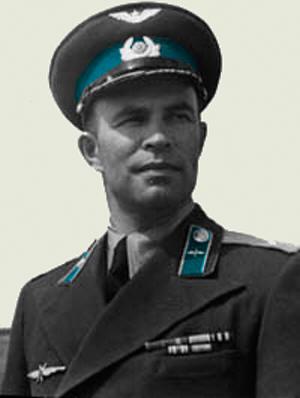
Source:
Fighting between North and South Korea began June 25, 1950. This war lasted exactly three years and one month. The United States acted in Korea open, under the UN flag on the side of South Korea and the Soviet Union - behind the scenes on the side of North Korea.
US forces in the conflict were presented by all branches of the military, which included several hundred thousand troops. The Soviet armed forces - just one individual Fighter Air, where, however, except aircraft parts included several anti-aircraft artillery divisions, several anti-aircraft searchlight regiments and battalions of several radio lokatorschikov.
The combat operations were actively involved as only anti-aircraft gunners and pilots, who as part of the 64th Fighter Air resisted 5 powerful air force and air their allies - Australia, Canada, England, South Korea, South Africa. Fighting Soviet pilots of the 64th Fighter Air began on 1 November 1950, in jet fighters MiG-15 design Mikoyan and Gurevich.
I took here
MiG-15 with the identification marks of the DPRK

Since then, the undivided domination in the air Americans and their allies came to an end. This involved the best air war planes on both sides, for the first time worked out new tactics in the conduct of the air war jet technology. Already the first fight in the sky proved that American jets F-80s "Shuting Star" and the F-84 "Thunderjet" significantly inferior to the MiG-15 in speed, rate of climb and armament. The fighting ended in their flight. To remedy the situation, at the beginning of 1951, the US Air Force immediately sent to the Korean Peninsula newest fighters - F-86 Sabre. Yielding Miguén in the climb, and specific impulse, they surpassed it in maneuverability, greater flight range and set speed in a dive. But the MiG-15 has the advantage in arms: three guns (two 23 mm and one 37 mm) Effective range 800 m to 6 machine guns caliber 12, 7 mm with a range of 400 meters. However, the MiGs had to deal in the air, not only with the Americans, but also with the military of other countries serving under the UN flag. So, its military strength granted and Australia. However, the fighting qualities of Australian pilots and equipping their aircraft was such that after the first meeting with Soviet aces of sixteen machines, only four survived.
F-86 Sabre [i]

Soviet shield over Korean Air forced Americans to reduce the activity of fighting small groups of fighter-bombers. Stopped daily flights scouts and bombers. A period of major air battles of groups of F-86 with MiGs. One of the most popular American air raids took place on April 12 in the so-called Black Thursday 1951, when the Americans tried to bomb the railroad bridge across the Yalu River near Sinuiju settlement. It was the only railway line, on which supply the North Korean army. In the battle involved more than forty B-29 bomber. This is a huge machine, capable of carrying more than 9 tons of bomb load. Its defensive armament consisted of half a dozen heavy machine guns. Such aircraft dropped atomic bombs on Hiroshima and Nagasaki. B-29s operated under the cover of hundreds of F-80 and F-84, divided into small groups. In addition, the group participated in the raid snare of F-86, had a total of about fifty planes.
In a reflection of this flight from the airfield Antung was raised 36 MiG-15s from the 324th Air Division Svir, commanded by Ivan Kozhedub. The battle took place at a height of 7-8 thousand. M for 20 minutes. MiG-15 pairs and fours attacked a group of B-29s, not paying attention to the support group. It was finally shot down 14 American planes - 10 B-29s and four Sabre.
While Americans were three times outnumbered, the battle turned around April 12 for their complete defeat in the sky over Yalutszyanom opened dozens parachute domes, the crews of American bombers were trying to save their lives ahead of them waiting prisoner. Two Soviet aircraft were damaged, but soon resolve the problem, they were returned to duty. Total in this battle over the river were able to break only three American aircraft. They dropped three six-ton radio-controlled bomb explosion which injured by one of the pillars of the bridge, but after a few days, a strategically important bridge was restored. The US Air Force for the whole week has been declared mourning for the dead pilots. In Korea began 46 aces Soviet pilots. In total, this fifty pilots shot down 416 enemy aircraft. The best Soviet ace of the Korean War is considered to be the commander of 196 IAP 324th Air Division, Lieutenant Colonel Yevgeny Pepelyaev, beautiful commander, an excellent fighter pilot and a true friend of his senior subordinates. It is known that when one of the battles was shot down and killed his slave, Senior Lieutenant Valery Larionov, Pepeliaev not hesitate to rewrite it by three of its victories. Thus, the official number of young pilot shot down enemy aircraft reached five, and Larionov was posthumously awarded the title Hero of the Soviet Union, which guaranteed his widow, the rest with a baby in her arms, extensive benefits. Along with these three, the number of enemy aircraft destroyed Pepelyaev in the sky over the Korean peninsula is 23 units (1, F-80s, two F-84, two F-94, F-18, 86). Best American ace, Captain Joseph McConnell, Jr., Christopher, given the inflated victories, boasts only 16 planes shot down. In second place among our aces - Captain Nikolai Sutyagin of 17 IAP with 21 wins. 64th Fighter Air Corps conducted military operations in Korea for almost three years. In total, during this time it was shot down enemy planes in 1525, 1099 of them were shot down by the aircraft. Soviet losses amounted to 319 MiG-15 and La 11
F-80 Shooting Star

Highest ace Yevgeny Pepeliaev Korean War (1918-2013)
Actually everything can proceed who wish.

Source:

